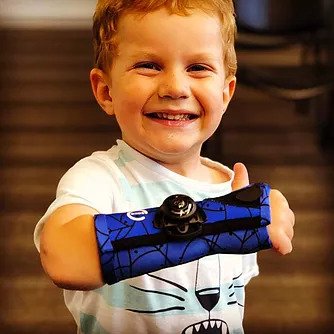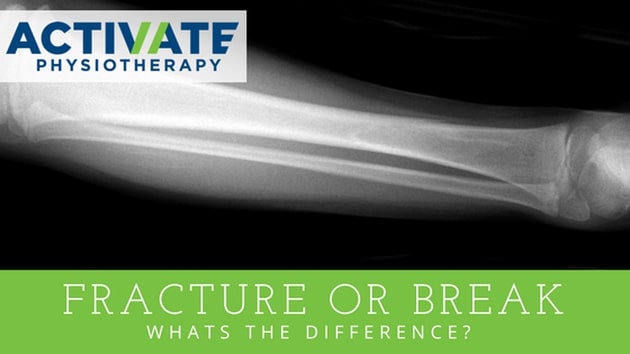It’s one of the most common questions we get at our fracture clinic... “Do I have a fracture or a break?”
So wanted to set the record straight… A fracture is a break and a break is a fracture.
So what’s the difference?
Many people believe a fracture is less serious than a break, often assuming it is more of a crack rather than a “full blown break.” But in reality there is no difference.
Medical professionals will most commonly use the term fracture for any loss of continuity of bone. Whether it’s a hairline crack barely recognisable on an x-ray or if the bone is completely shattered — it’s considered a fracture.
The term broken bone, while referring to the same thing clinically, is more commonly used non-clinically as layman’s terminology.
So how do you know how serious a fracture is?
There are many different types of fractures and medical professionals use different terminology to describe them. Some of this terminology describes the severity for example a greenstick or buckle fracture which are seen in children and are generally less serious. Other descriptions such as spiral describe the pattern of fracture seen in the bone. There are even terms for fractures which only occur in a specific area of the body for example a Lisfranc fracture in the foot named after French surgeon Jacques Lisfranc de St. Martin, who served in the Napoleonic army in the 1800s.
What your physio wants to know
What your physio or doctor is more concerned about is how and why the fracture occurred in the first place. Bones fracture because the amount of load placed on them is greater than their strength. This occurs when:
- High loads are placed bones – falls, car accidents and sporting injuries can lead to fractures in even the strongest bones
- Loads are placed through weak bones – We all loose bone density as we age but people with osteoporosis or other bone weakening conditions or those who have been immobilised or on bed rest can all be at risk of fracture from even very low loads. Certain medications, medical conditions or treatment for diseases such as cancer can all increase the risk of fracturing bones.
- Repetitive stress – recurrent exposure to load on bones stimulates the body to make bones stronger, but too much exposure can also lead to stress fractures. These types of injuries occur most commonly in dancers, gymnasts and runners and may end up resting in more significant fractures if left untreated.
Although in the end, most fractures will need to be treated with immobilisation in a splint or cast, knowing how and why the injury occurred is important to prevent it from occurring again.
How are fractures and breaks treated?

By now you’ve probably guessed fractures and breaks are treated in exactly the same way. The majority of fractures are treated with a period of immobilisation in a splint, cast or moonboot. If the fracture occurs in the leg, you may or may not be allowed to walk on it, otherwise you will need to a walking aid like crutches, sticks or scooters to assist you to get around.
In some cases fractures will need to be reviewed by an orthopaedic specialist. This may be because of the location of the fracture, for example if it passes through the growth plate or if the fracture is displaced so that the parts of the bone will not come together without assistance. The specialist will determine if further intervention such as surgery is required before immobilising the bone.
…and then what happens?
After any area of the body is immobilised for a time the area will stiffen and the muscles will become weaker. For some people physiotherapy will be required to assist you to learn to walk, move the joint more freely and to rebuild muscle strength.
Activate Physiotherapy’s fracture clinic operates Monday-Saturday and offers private management for simple, non-displaced fractures of the upper and lower limb. If you are concerned you make have broken a bone or have been immobilised due to a fracture, call one of our clinics to speak with a Physiotherapist about how our fracture clinic services can help you.

